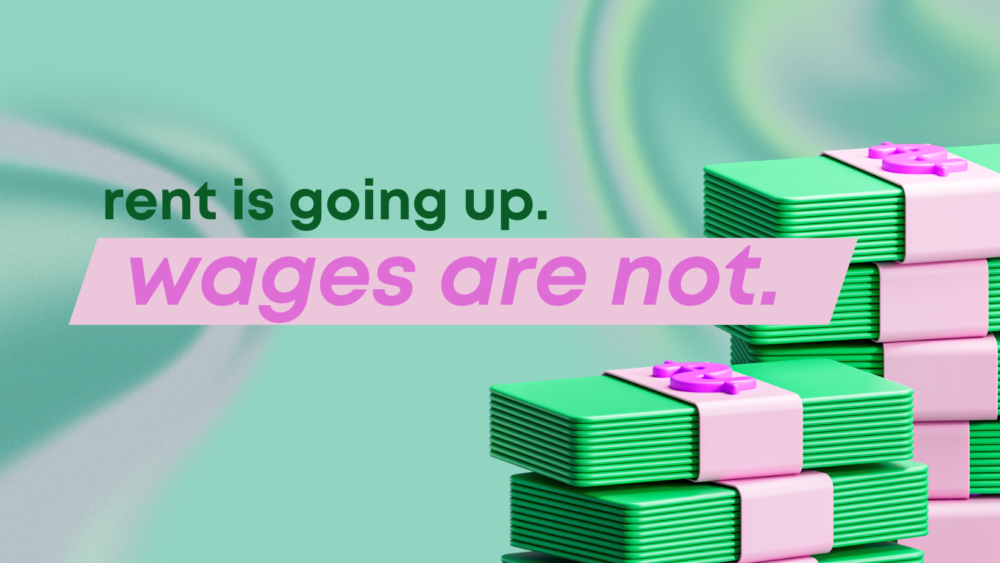
If you live in Washington, you may feel like your rent is increasing faster than your income. Data show that you’re probably correct. Over the past decade, rental costs in Washington have begun outpacing wage gains for workers, making it harder and harder to afford a place to live.
In 2021, the median cost to rent 2-bedroom housing climbed to $1651/month. That’s equal to 14 hours of work at the state’s median wage of $30.50/hour. That fits within Housing and Urban Development’s definition of being not “rent burdened.”
But it’s important to note that Washington’s minimum wage is about half that. Additionally, the cost of living is dependent on where a person lives – and may not always sync with the wages available.
These data points also reflect a marked increase – meaning that people are doing the same work but are earning less.
Rent is Increasing – Purchasing Power Isn’t
One of the most critical issues around rental increases is the ability for people to keep up. And in the past decade, many have not. In terms of purchasing power for middle-income workers, the cost of rent has increased 18% since 2010.
Among the state’s five most populous counties, rent is highest and has increased the most (relative to wages) in Snohomish County, where median 2BR rent ($2,076/month). That’s equivalent to 17 hours of work at the local median wage of $30.08/hour, and represents a 53% increase over what a similar wage earner would have paid in the year 2006.

This, of course, is based on median income. Those wages do not reflect the experiences of many workers, or even many industries. Workers in industries like food service, retail, office administration, and even education all earn less than that.
Not only do renters in Snohomish have to work more in order to afford the same rent, they also have little hope of finding a job that might alleviate the situation. In a previous report released by EOI, data have shown that wages in King and Snohomish counties largely do not meet the needs of workers. That report showed that in those two counties, fewer than 28% of jobs paid enough to rent a 2-bedroom apartment.
All told, these data show that the rent and wages of Washington workers have not kept pace. Residents of Washington may work hard, save their money, and do all of the prescribed “right” things, economically-speaking, and still find themselves without appropriate shelter. This lack of balance between wages and the cost of living leads to poverty, homelessness, and a cycle that is nearly impossible to break.
More To Read
August 10, 2021
New State Programs May Ease a Short-Term Evictions Crisis, but Steep Rent Hikes Spell Trouble
State and local lawmakers must fashion new policies to reshape our housing market
November 20, 2020
We Can Invest in Us
Progressive Revenue to Advance Racial Equity
